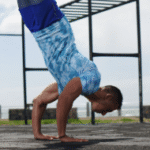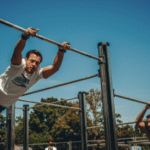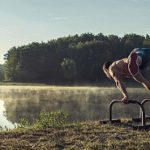Typical Workouts in a Private Calisthenics Setting
Let’s break down in detail what typical workouts look like within a private, one on one calisthenics coaching setting in the USA. While every session should be personalized, a well structured workout generally follows a logical flow and incorporates specific types of exercises designed to help you achieve your goals safely and effectively.
Unlike following a generic online program or a group class, a private calisthenics session is tailored specifically to you. It is not just a random sequence of exercises; it is a planned workout designed by your coach based on your goals, current abilities (identified through ongoing assessment), and how you are feeling on that particular day. While the exact exercises will differ for everyone, the structure and types of activities included often share common elements focused on maximizing progress.
The Personalized Foundation
Before diving into examples, it is crucial to reiterate that the core of private coaching is personalization. The “typical” workout components described below are always adapted. A session for a beginner focusing on foundational strength will look very different from a session for an advanced athlete working on a planche, or someone using calisthenics primarily for weight loss.
Common Session Structure Recap
Most effective private sessions follow a logical progression to prepare the body, perform the main work, and cool down properly. This generally includes a check in, a dynamic warm up, potentially skill specific work, the main strength training component, sometimes conditioning, and finally a cool down with mobility or flexibility work, followed by a brief review.
Example Content: Warm Up and Mobility Phase
Sessions usually begin with a warm up specifically designed to prepare your body for the movements ahead. This is not just jumping jacks. It might include 5 to 10 minutes of light cardiovascular activity to increase blood flow, followed by dynamic stretches like leg swings and arm circles, and targeted joint mobility work focusing on wrists, shoulders, hips, and ankles. Crucially, it often incorporates activation drills to “wake up” key muscles needed for the session, such as band pull aparts for shoulder health, glute bridges for hip extension, or scapular push ups and pull downs to prepare the shoulder blades for pushing and pulling exercises.
Example Content: Skill Work Phase
If your goals include mastering specific calisthenics skills, this component is often placed after the warm up when your nervous system is fresh and ready to learn complex motor patterns. Examples depend heavily on your goals:
For Handstand Goals: This might involve wrist conditioning, wall supported drills like chest to wall or back to wall holds, kick up practice, freestanding balance attempts (potentially with coach spotting if in person), or specific drills to correct alignment issues.
For Muscle Up Goals: This could include practice with false grip hangs and rows (on rings), banded or assisted transitions over the bar or rings, deep dip practice, explosive pull up variations, or negative (lowering) muscle ups.
For Lever Goals: You might work on tuck front lever or back lever holds, progressing to advanced tuck or single leg variations, skin the cats, dragon flags, or core compression exercises.
The coach provides intensive feedback on technique during this phase.
Example Content: Strength Training Phase
This is often the core of the workout, focused on building the necessary strength using progressive overload principles applied to bodyweight exercises. Examples include:
Pushing Exercises: Progressions ranging from incline push ups, standard push ups, diamond push ups, decline push ups, ring push ups, pseudo planche push ups, or various dip progressions (bench dips, parallel bar dips, ring dips).
Pulling Exercises: Progressions like bodyweight rows (using rings, a suspension trainer, or a low bar), band assisted pull ups or chin ups, negative pull ups, isometric holds, strict pull ups/chin ups, progressing towards weighted or advanced variations like archer or typewriter pull ups.
Leg Exercises: While sometimes less emphasized in pure upper body calisthenics, a balanced program includes leg work like deep bodyweight squats, lunges (forward, reverse, lateral), Bulgarian split squats, step ups, glute bridges, Nordic hamstring curl progressions, calf raises, and progressions towards pistol squats (single leg squats).
Core Exercises: Moving beyond basic crunches to functional core work essential for calisthenics, such as plank variations (including RKC planks), hollow body holds, L sits or tuck sits (on floor, parallettes, or bars), hanging leg raises or knee raises, dragon flag progressions, or ab wheel rollouts.
During this phase, the coach dictates the specific exercise variation, number of sets, repetitions (or hold times for isometrics), tempo (speed of movement), and rest periods, constantly monitoring your form and adjusting as needed.
Example Content: Conditioning Phase (If Included)
If your goals include fat loss, improved cardiovascular endurance, or general work capacity, a conditioning segment might be added, often towards the end. This could be a bodyweight circuit involving exercises like burpees, mountain climbers, jump squats, jumping lunges, or high knees, performed for timed intervals (like Tabata) or a set number of rounds.
Example Content: Cool Down and Flexibility/Mobility
The session typically concludes with a cool down phase. This might involve light movement followed by static stretching held for 20 to 30 seconds, focusing on the major muscle groups worked during the session. Alternatively, or in addition, the coach might guide you through specific mobility drills aimed at improving range of motion in areas identified as needing work during your assessment or relevant to your skill goals (e.g., improving shoulder overhead mobility, increasing wrist extension flexibility, opening up the hips).
The Coach’s Role Throughout
Across all these components, the coach is actively involved: observing every rep, providing immediate verbal or visual cues (and tactile cues if in person), correcting form to ensure safety and effectiveness, motivating you appropriately, adjusting exercises or intensity on the fly based on your performance, and (if in person) providing spotting when necessary.
Conclusion
A typical private calisthenics workout is far from a generic routine. It is a dynamic, structured, and highly personalized session designed to move you progressively towards your specific goals. By incorporating targeted warm ups, dedicated skill practice (if applicable), progressive strength training using appropriate bodyweight variations, potential conditioning, and focused mobility work, all under the expert guidance and constant feedback of your coach, these sessions provide a safe and highly effective environment to build strength, master skills, and transform your body.

Typical Workouts in a Private Calisthenics Setting
Route
Calisthenics Gym Houston Functional Bodyweight Training
Secondary phone: (346) 483-3195
Email: info@calisthenicsclubhouston.com
URL: https://calisthenicsclubhouston.com/
Monday 6:00 AM - 7:00 PM Tuesday 6:00 AM - 7:00 PM Wednesday 6:00 AM - 7:00 PM Thursday 6:00 AM - 7:00 PM Friday 12:00 PM - 6:30 PM Saturday 9:45 AM - 12:00 PM Sunday 3:00 PM - 5:00 PM





